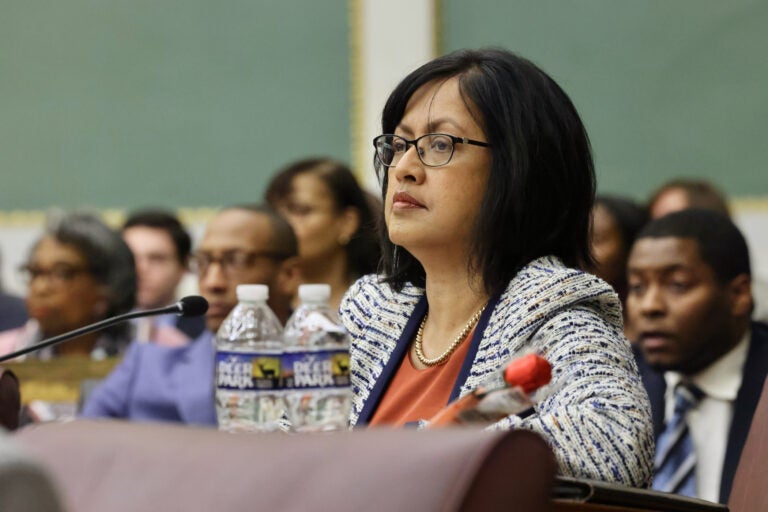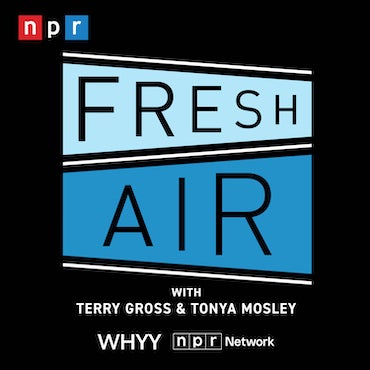Council members contend foster care support is lacking in Philadelphia
Council members want to know what happens when 43% of youth “age out” of the system and have to find a job and a home of their own.

Philadelphia City Councilmember Nina Ahmad. (Emma Lee/WHYY)
From Philly and the Pa. suburbs to South Jersey and Delaware, what would you like WHYY News to cover? Let us know!
Between 13,000 and 15,000 children are currently in Pennsylvania’s foster care system at any given time, many of whom live in Philadelphia.
Even though a report released earlier this year by the city’s Department of Human Services showed nearly all foster care provider agencies received “optimal” ratings, some city officials say the system can still be improved. They say changes need to be made to better support young people who age out of the system.
“That’s one of our biggest priorities,” Councilmember Nina Ahmad said. “To make sure they’re not housing insecure, make sure they’re ready for job training, making sure that they have that bridge, and I think there’s work that’s underway to look at that.”
A report released by the city in January found that there was a 13% decline in the number of children who’ve been placed in dependent care in 2024 compared to 2023, from 3,333 children in June 2023 to 2,891 children in June 2024.
Dependent care includes both traditional foster care and what’s known as kinship care, when a relative or others who are considered family provide full-time care.
According to numbers from the Annie E. Casey Foundation, 43% of Pennsylvania’s foster youth remain in the system until they age out. That also has Ahmad concerned.
She’s hopeful Mayor Cherelle Parker’s Housing Opportunities Made Easy, or H.O.M.E., initiative could help those young people get into securing housing as they age out of foster care. The H.O.M.E. initiative is a comprehensive strategy to create and preserve 30,000 units of housing over four years using $800 million in bonds.
“One of the things I want to amend in the H.O.M.E. bill is to actually have a set aside of resources specifically for housing and security for both families in the child welfare system and children aging out of foster care. I just want to codify it so it’s clear and there’s no ambiguity about it,” she said.
Councilmember Cindy Bass summed up the city’s foster care system in one word: trouble.
“I don’t think that we’re doing nearly enough for foster youth in our city. There’s so much more that can be done,” Bass said. “There are endless stories where people have had interactions with DHS. And those interactions have been troubling, and in some places just neglectful.”
She doesn’t blame the city’s Department of Human Services though.
Bass claims problems arose when the city decided to farm out the foster care supervision to Community Umbrella Agencies, or CUAs, which are neighborhood groups contracted by the city to handle foster care and other youth issues. Dozens of lawsuits have been filed against CUAs on behalf of children who were injured or killed in the city’s child welfare system.
The problems exposed by the lawsuits include constant under-staffing and turnover in the workforce, in addition to the needless separation of families.
Bass said using CUAs instead of city workers was a flawed decision from the start when it was proposed as a cost-cutting measure.
“I thought that was questionable from the very beginning, because how do you cut costs with, again, a very vulnerable population? How do you cut costs and improve services? And so we’ve seen that that has not nearly been the case,” she said.
Why do Pennsylvania kids end up in foster care?
About half of all kids who are in foster care in Pennsylvania are there as the result of parental neglect, according to a report from the Annie E. Casey Foundation. Another 30% are in foster care due to a behavior problem, and 18% are there because of abuse.
Ahmad said that working with families before their children are removed from their household would be a good start.
“These families are in crisis and we need very highly trained people to work with them so we can tamp down the issues that are facing them,” Ahmad said. “Make sure we give wraparound services, try to preserve the family before we go to the step of putting children in foster care.”
She said doing that might require a change in culture at DHS and the CUAs in order to preserve families, rather than split them up.
“I don’t think that the rules are made to do that, but that might be what’s happening because we are not doing wraparound services early on, and we’re not identifying who needs those services before there’s a report made which makes a whole cascade of events start, right? So, child welfare should not be in this scenario to start.”
She suggested involving the school system.
“We should be able to spot and know which families are in crisis, which children are in danger. We should really be able to assess that since they spend most of their day in school,” Ahmad said.
She admitted that the in-school monitoring is for children who are actually going to school.
“We must track those who are not. So there are ways to make sure we use our data to really look at where to target our resources,” she added.
Council held the first of what is expected to be a series of hearings on the issue in June and more follow-ups are expected in the near future.

Get daily updates from WHYY News!
WHYY is your source for fact-based, in-depth journalism and information. As a nonprofit organization, we rely on financial support from readers like you. Please give today.








